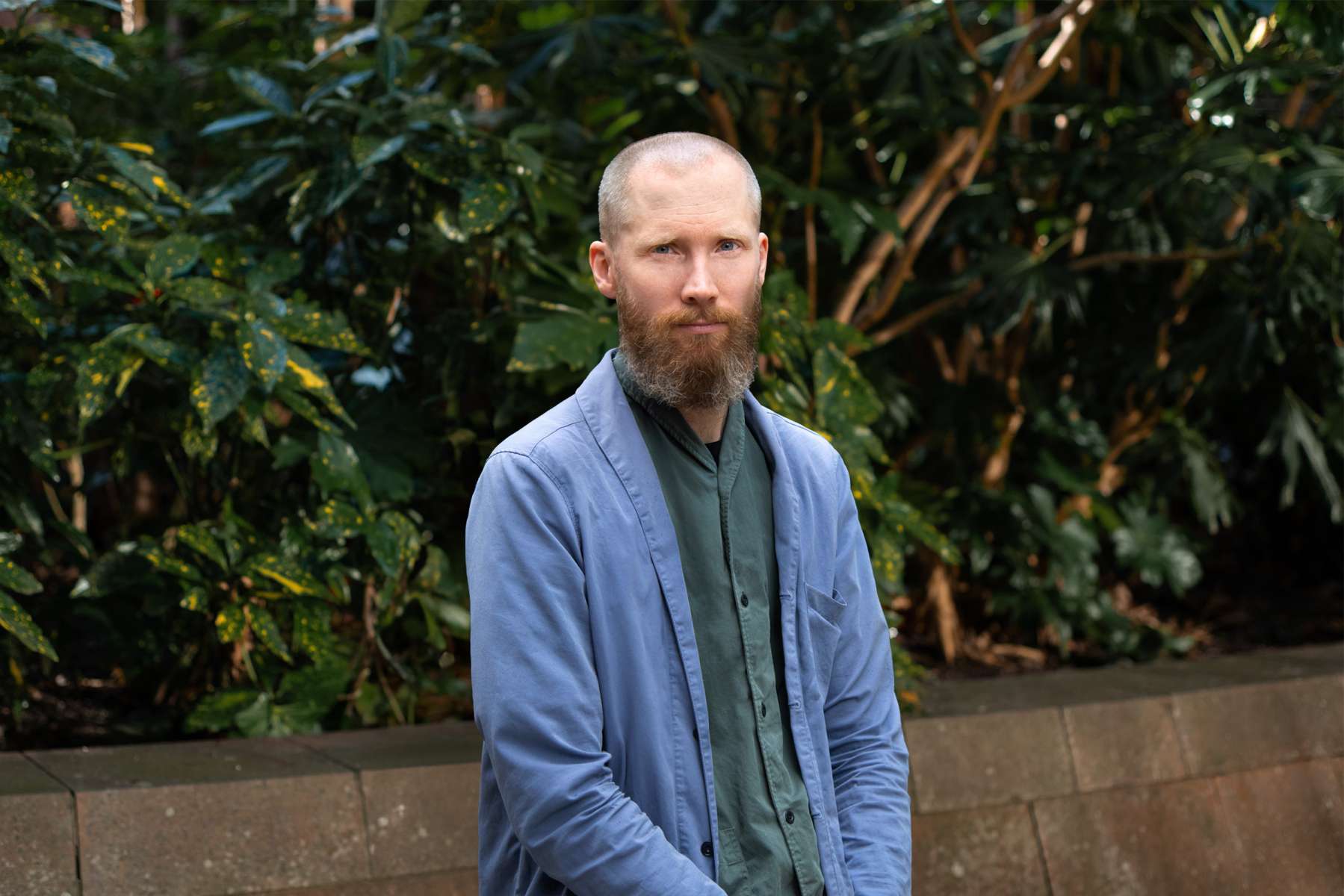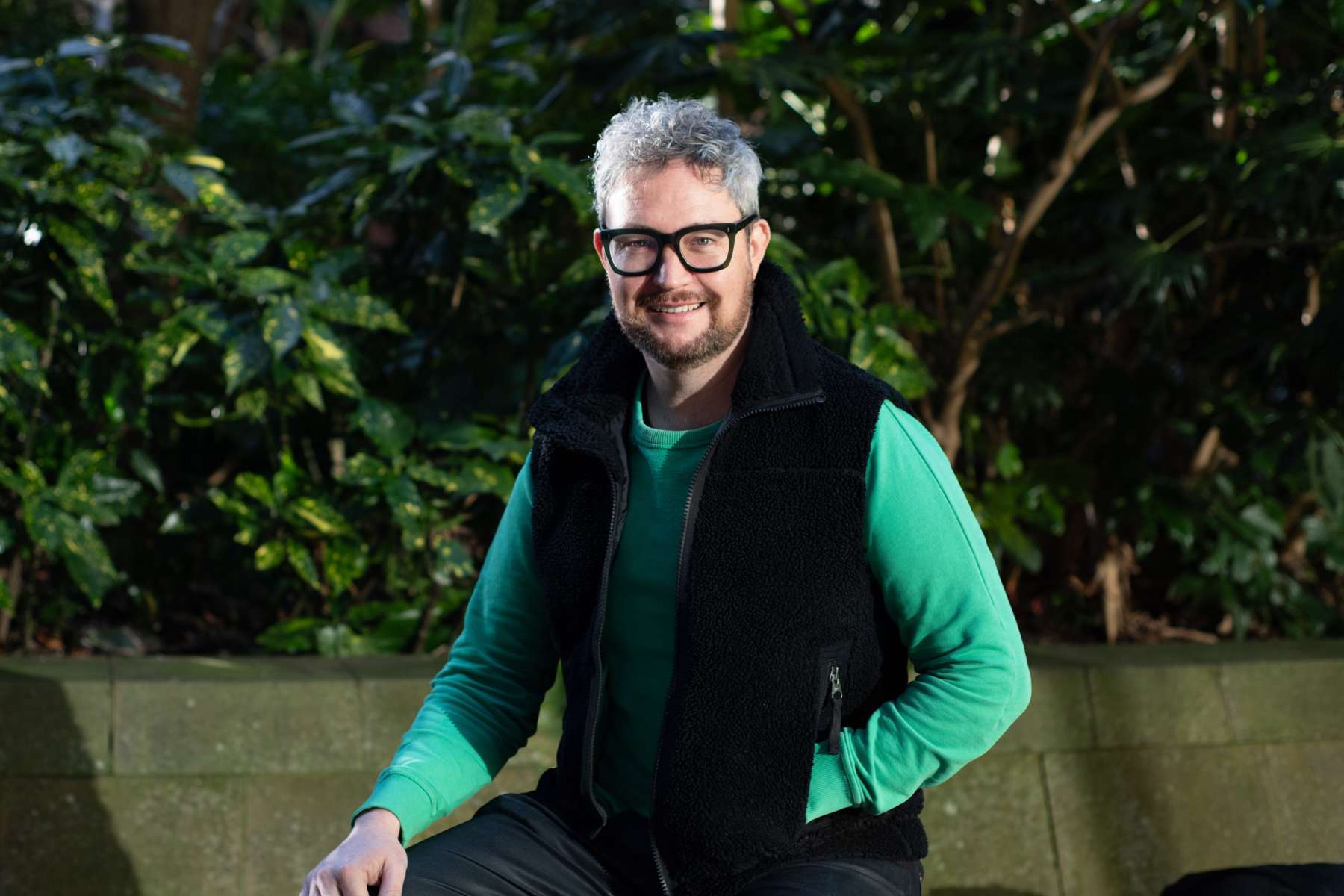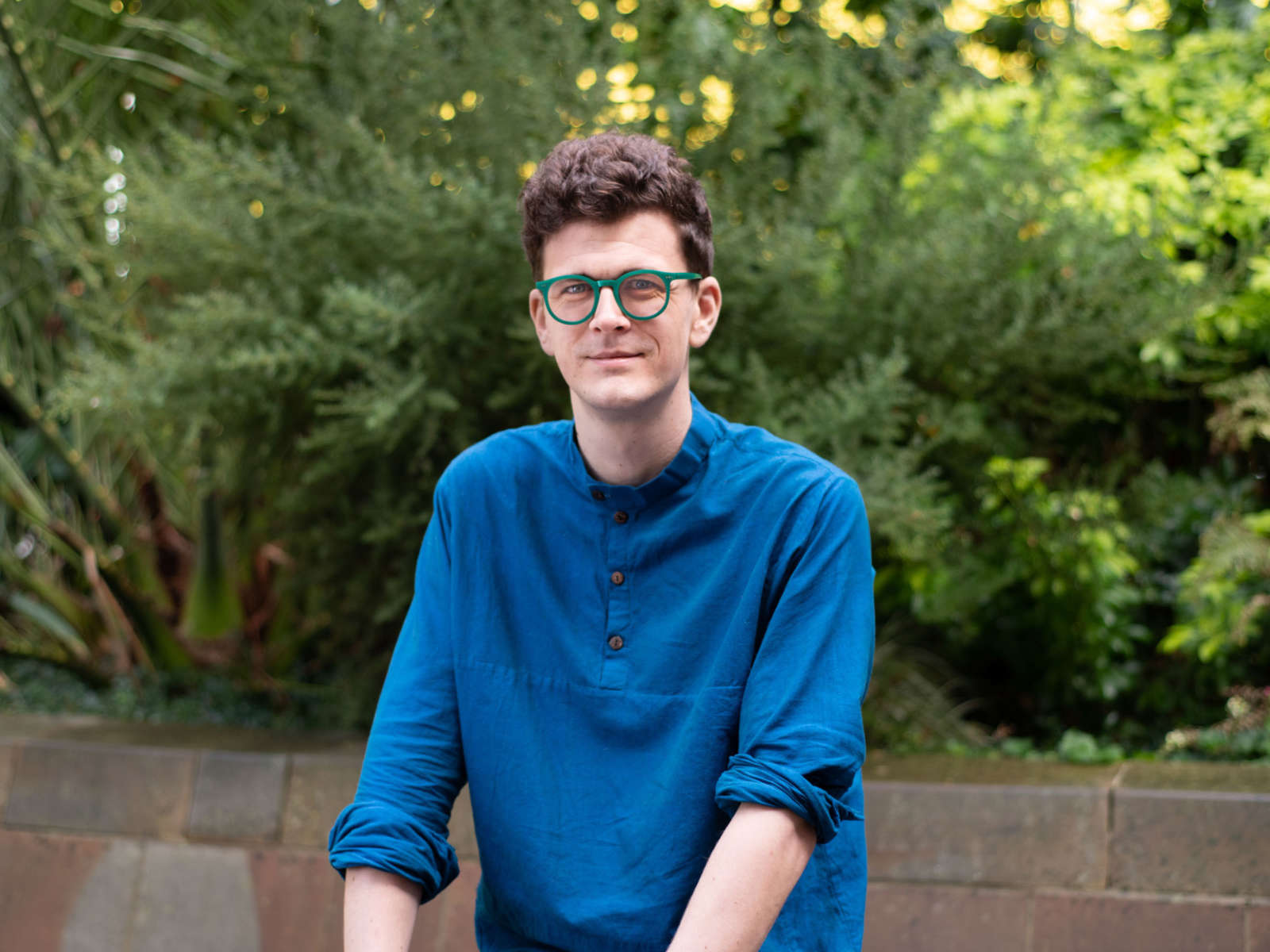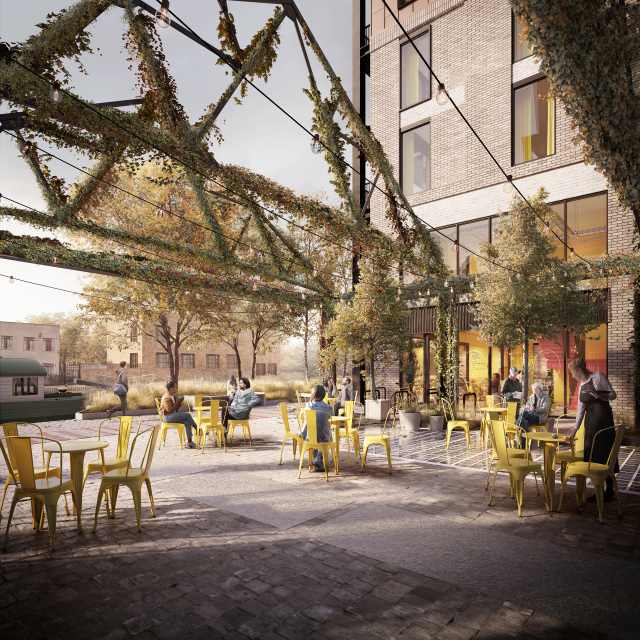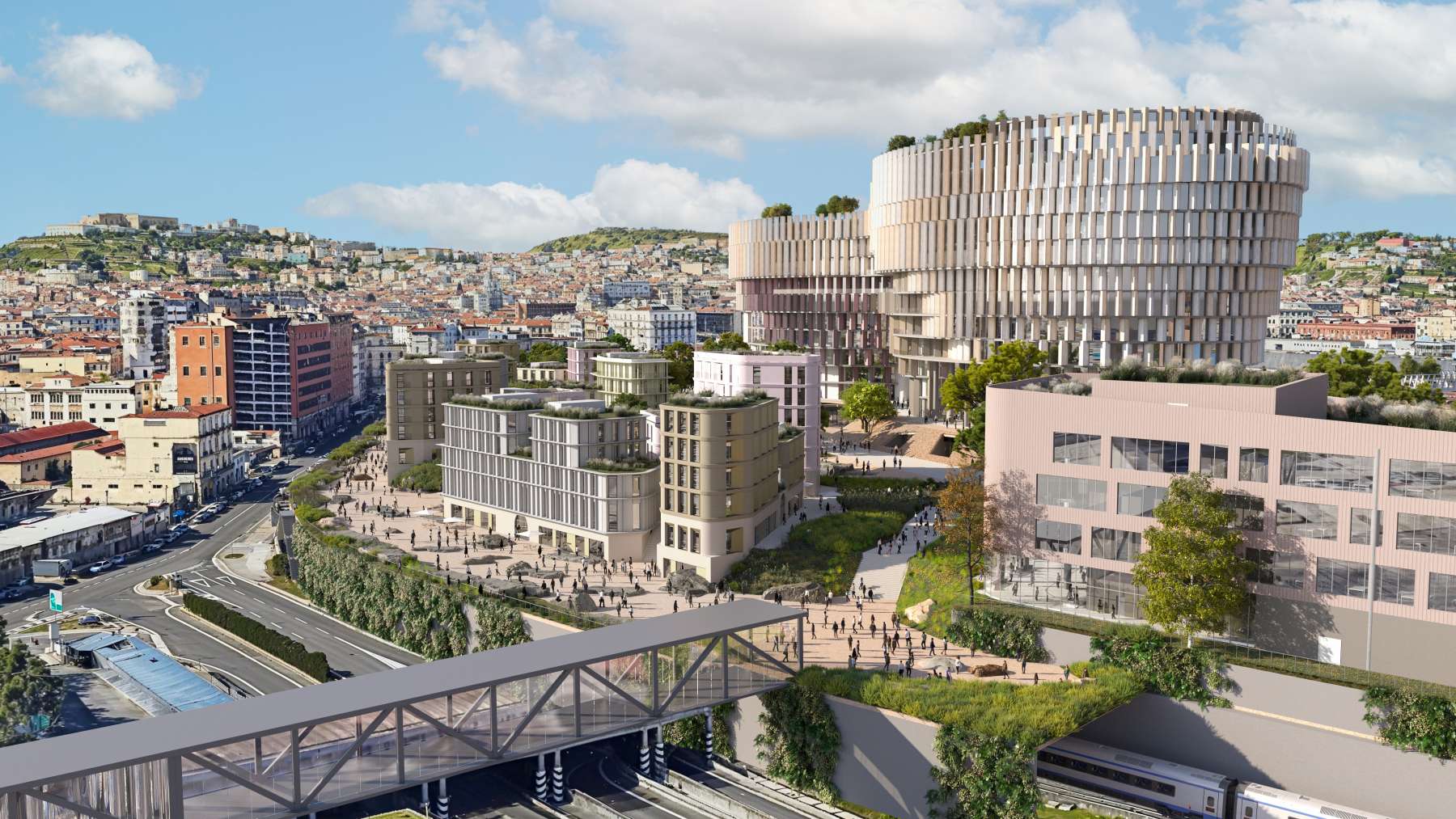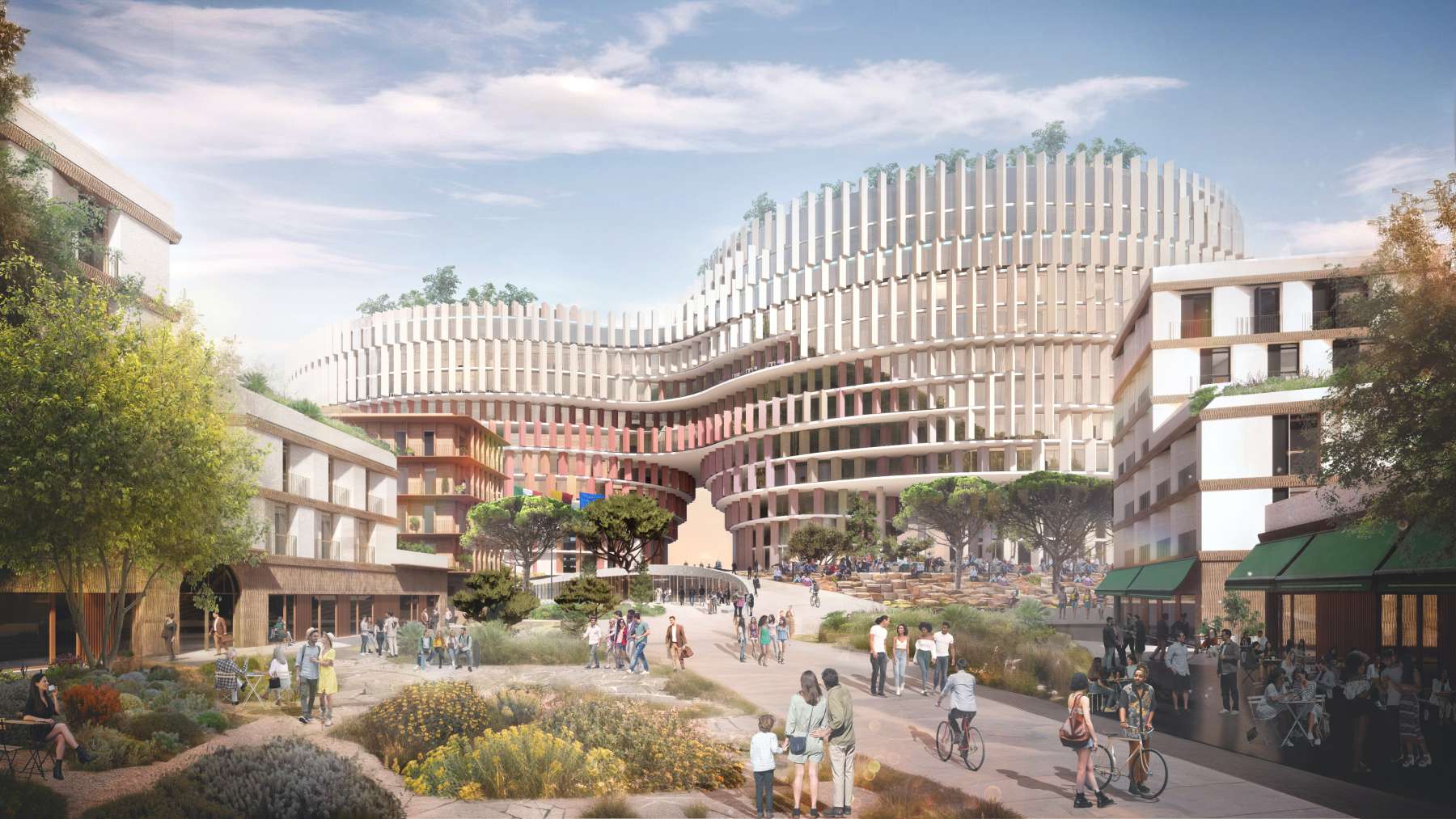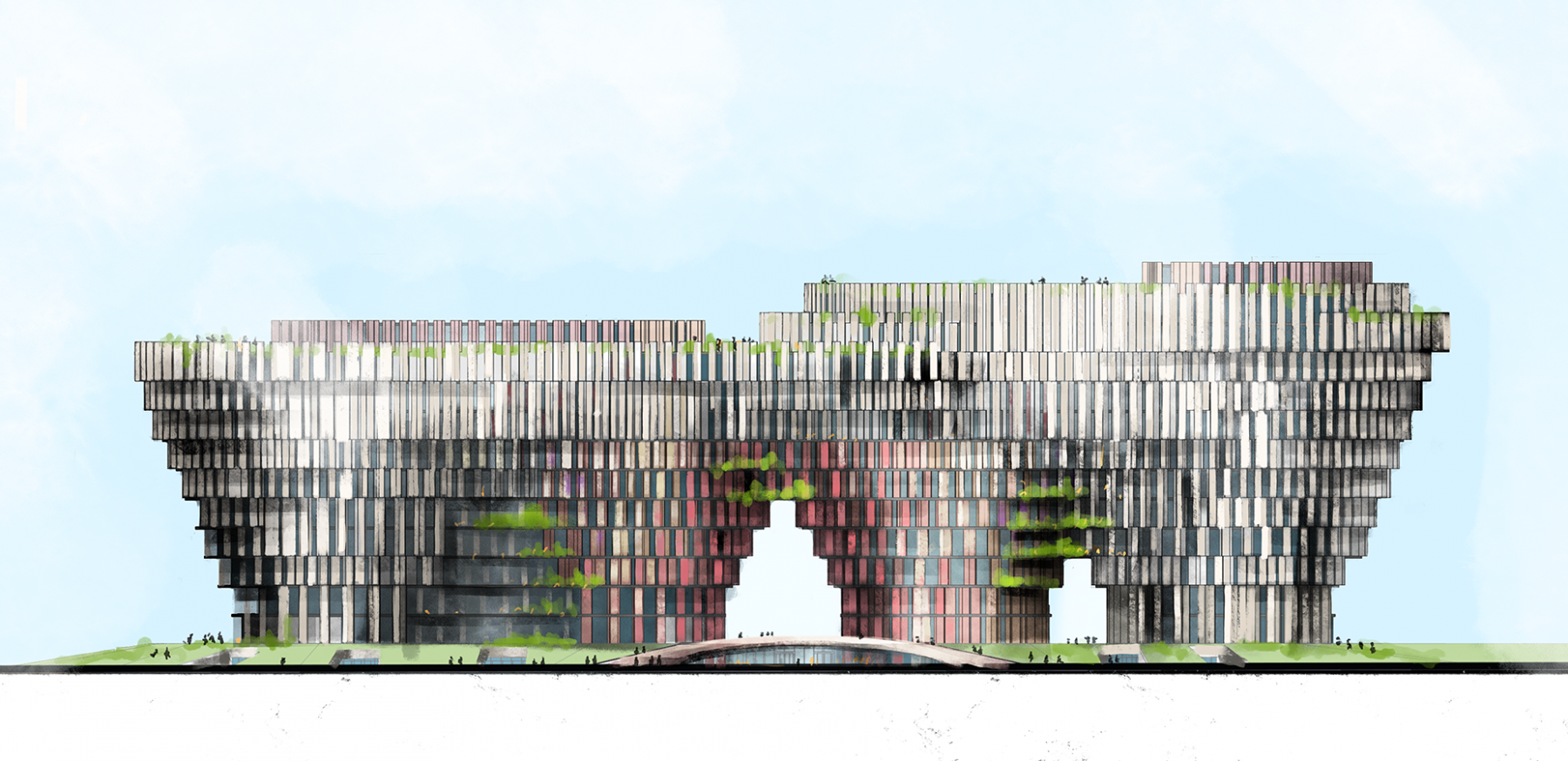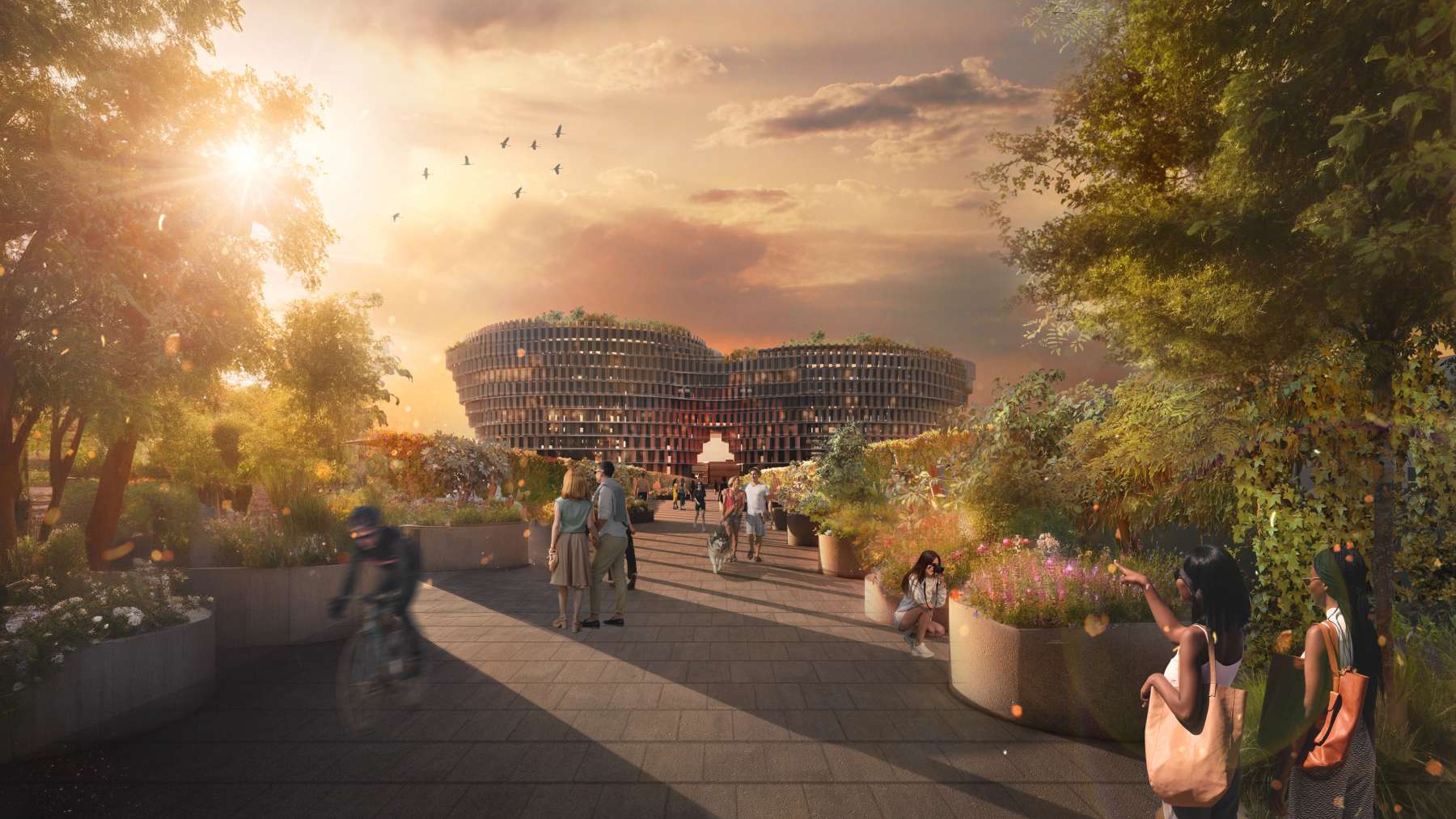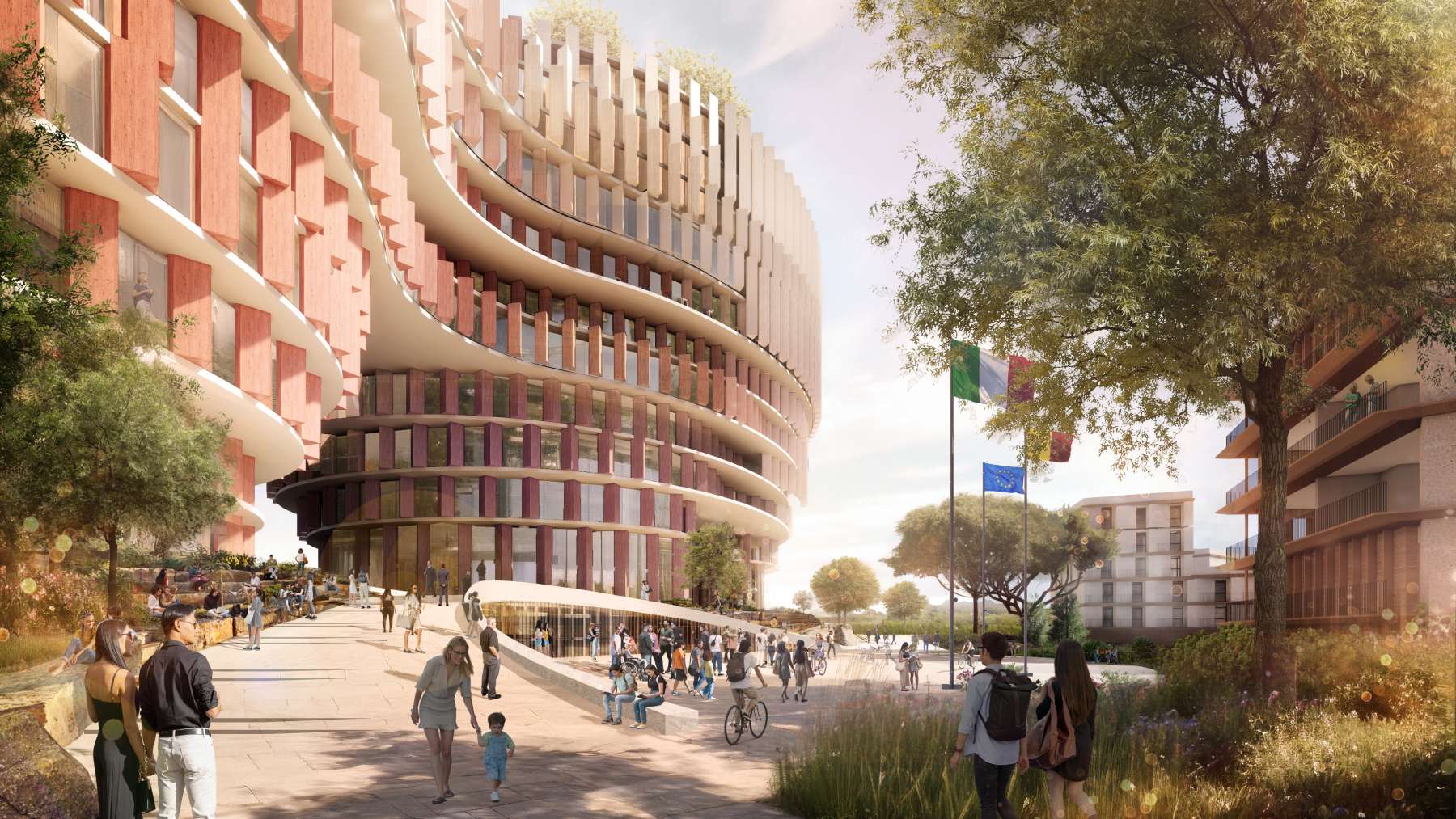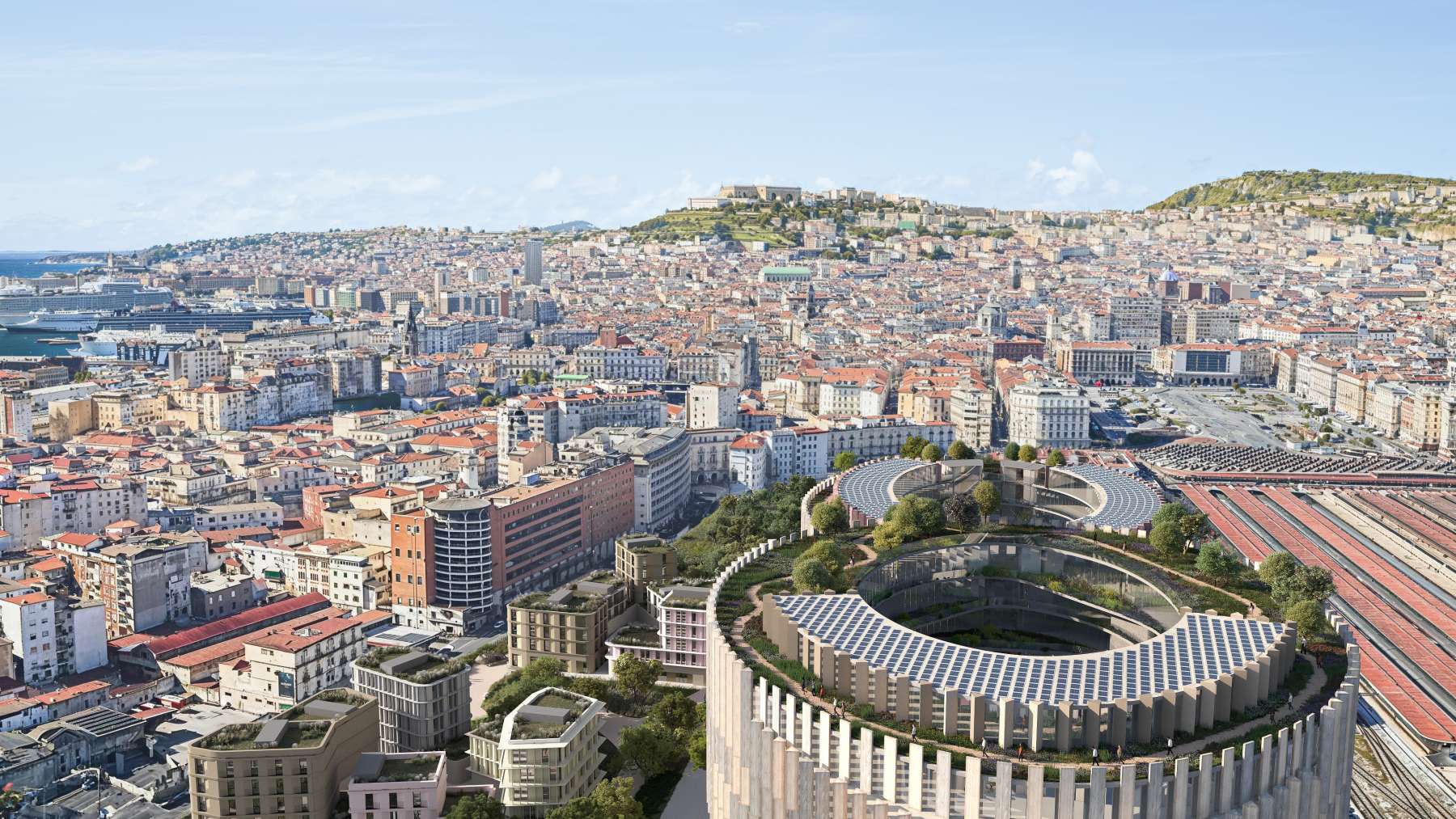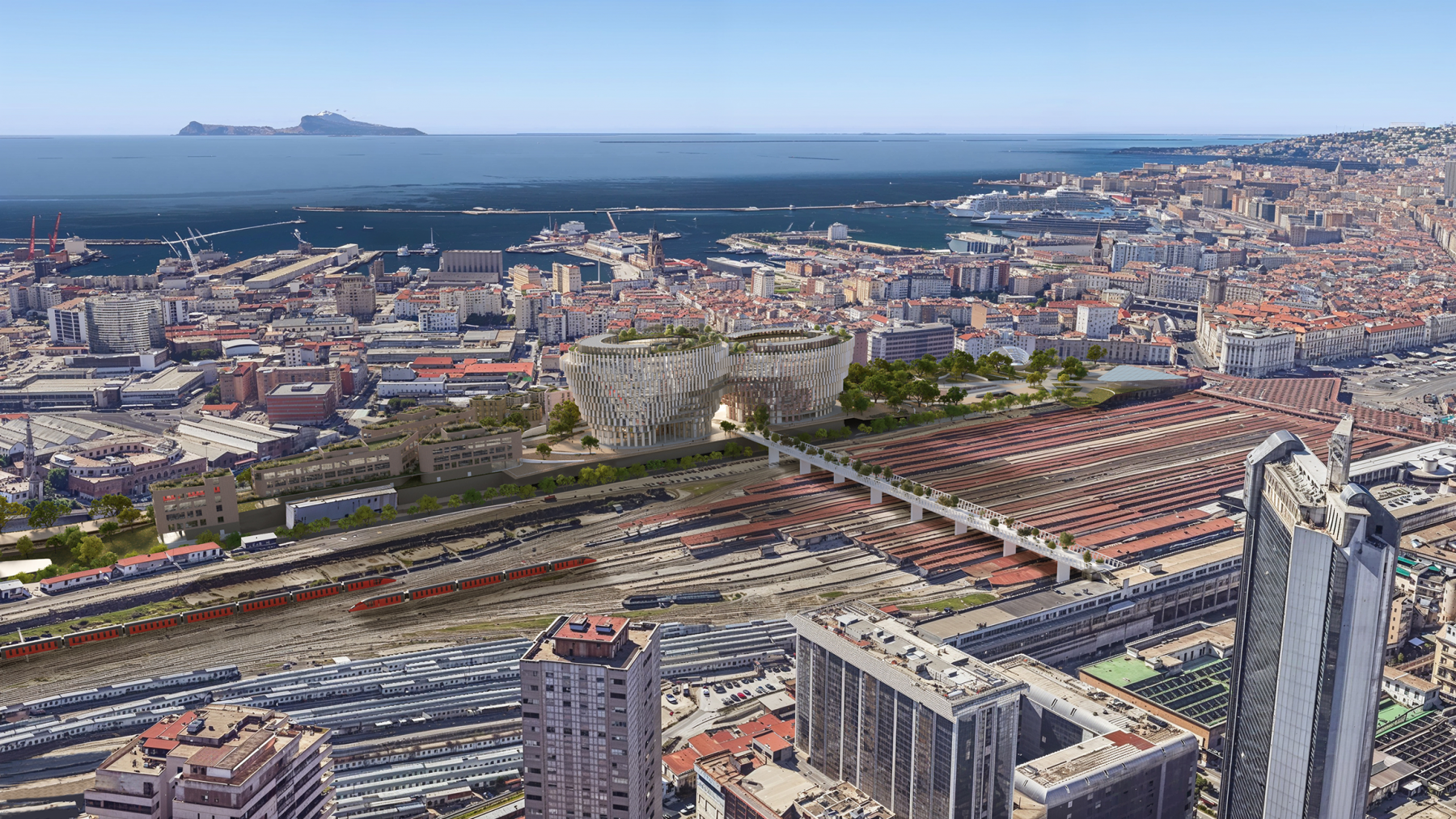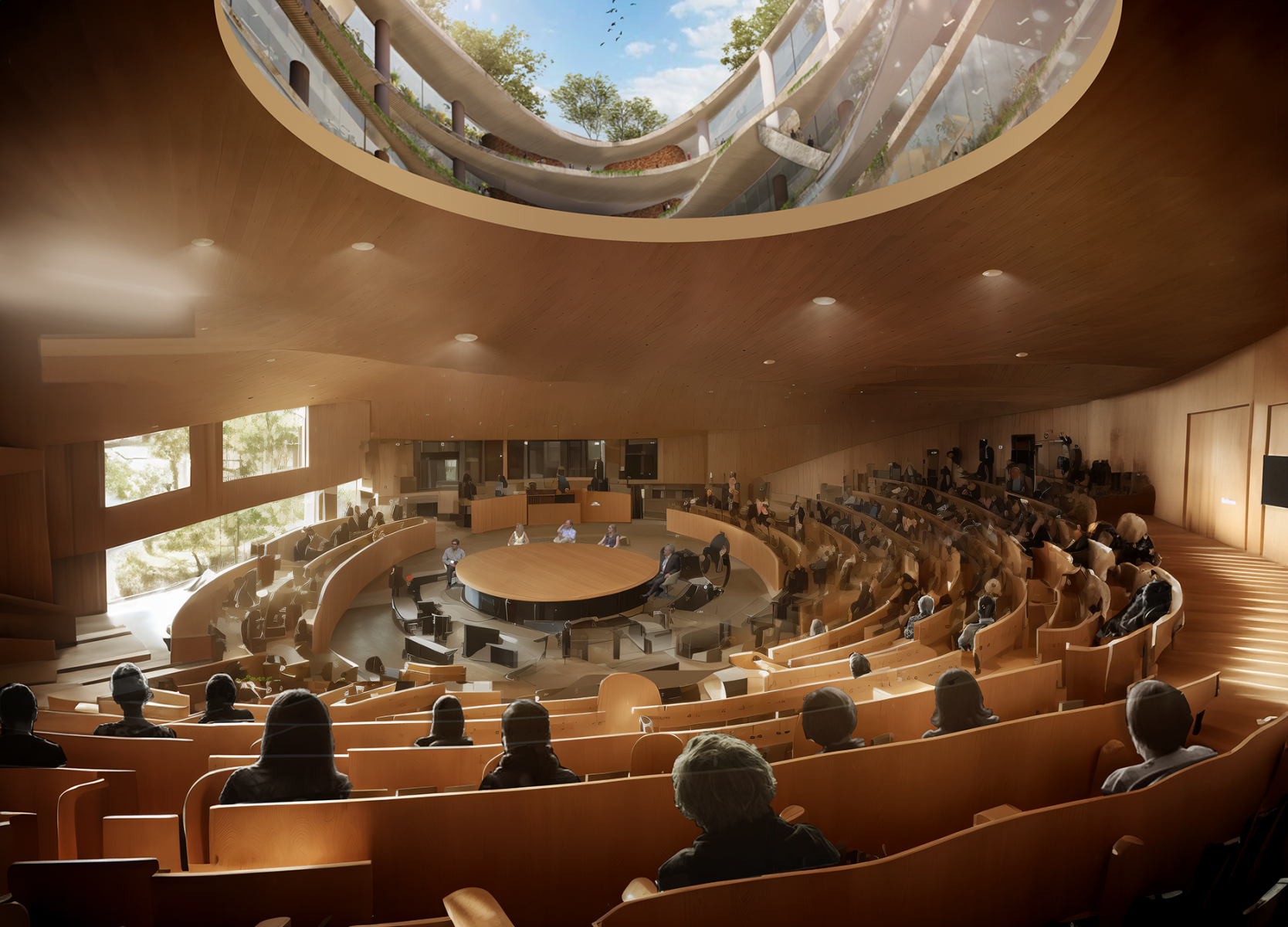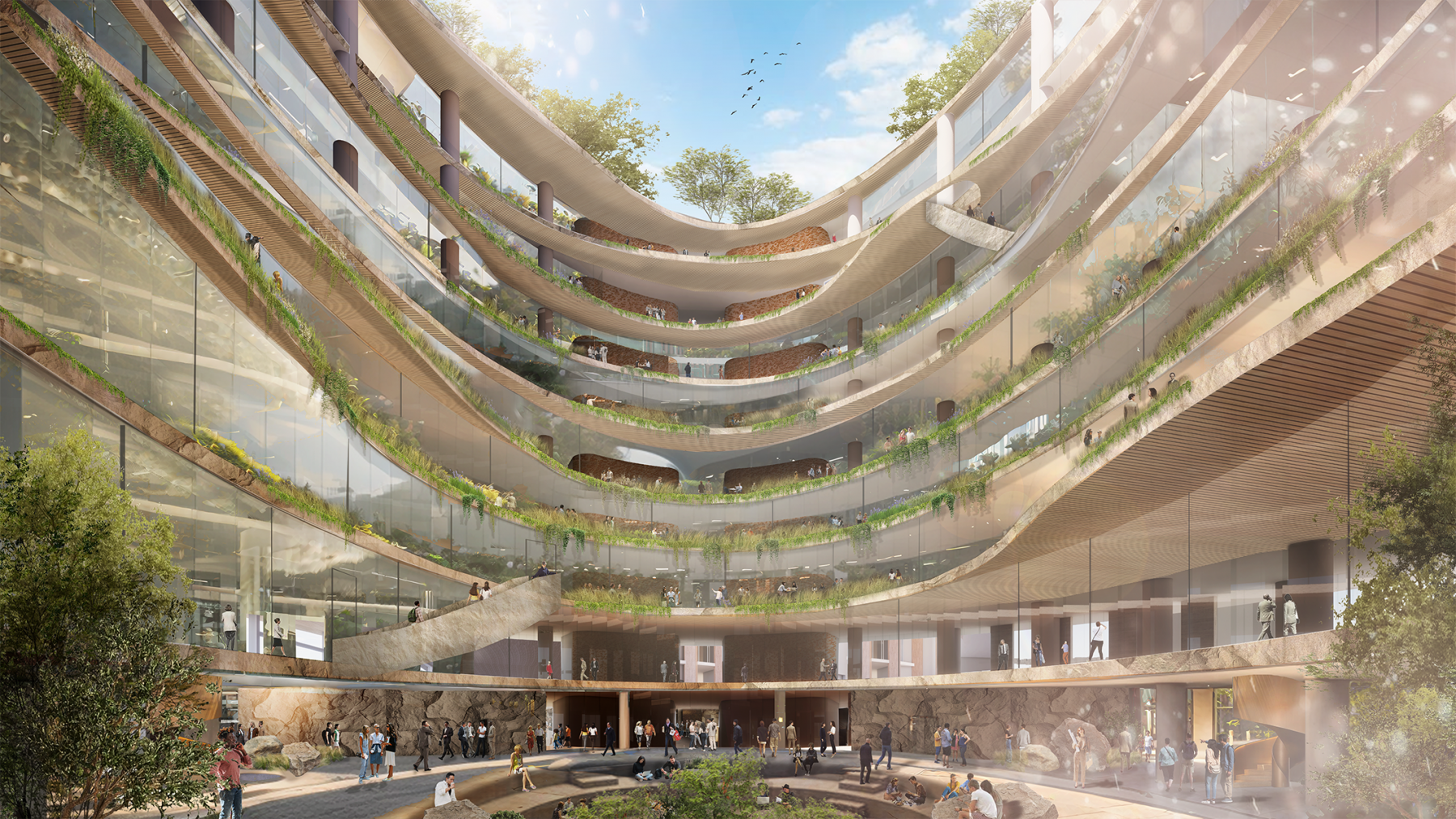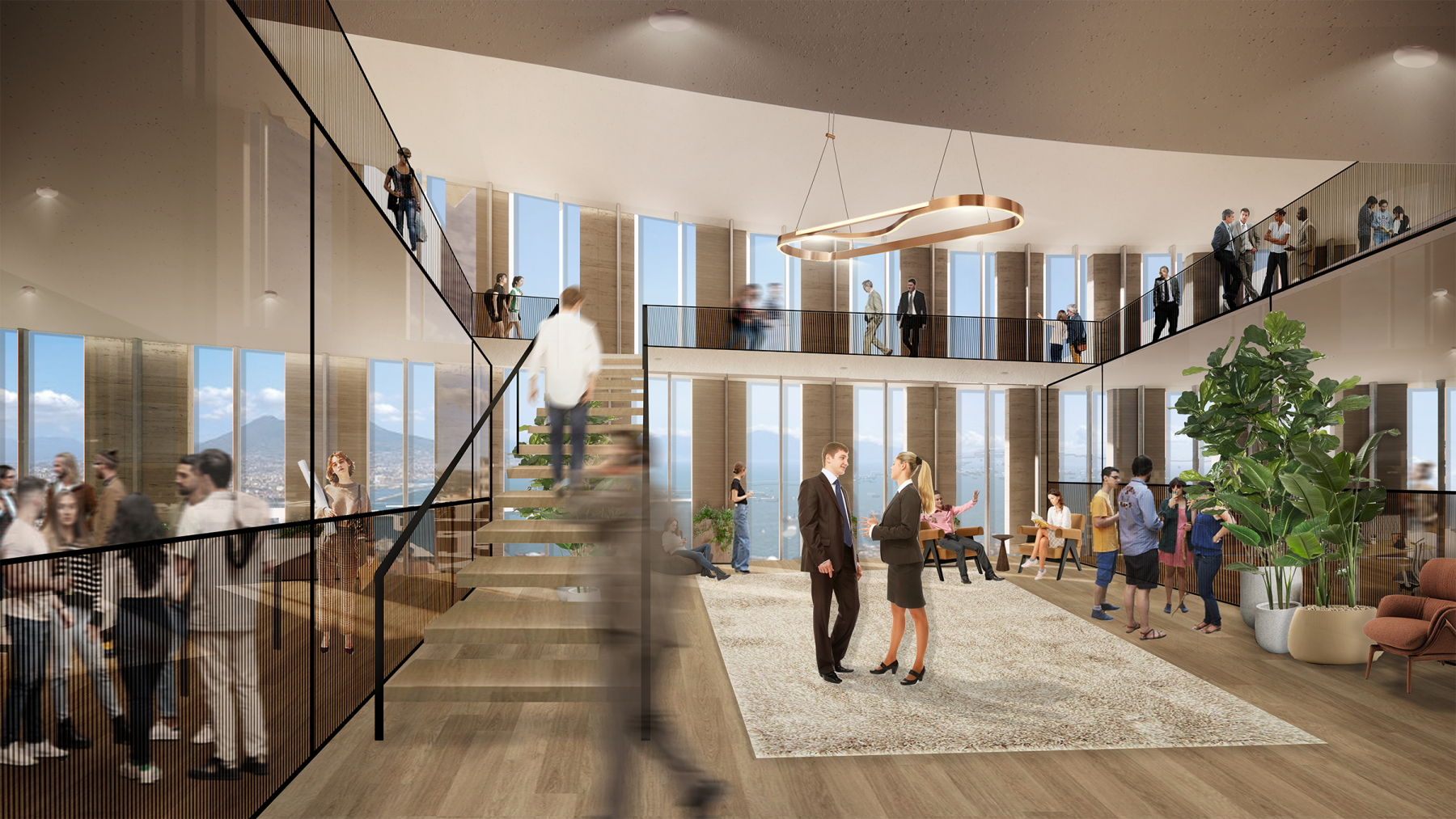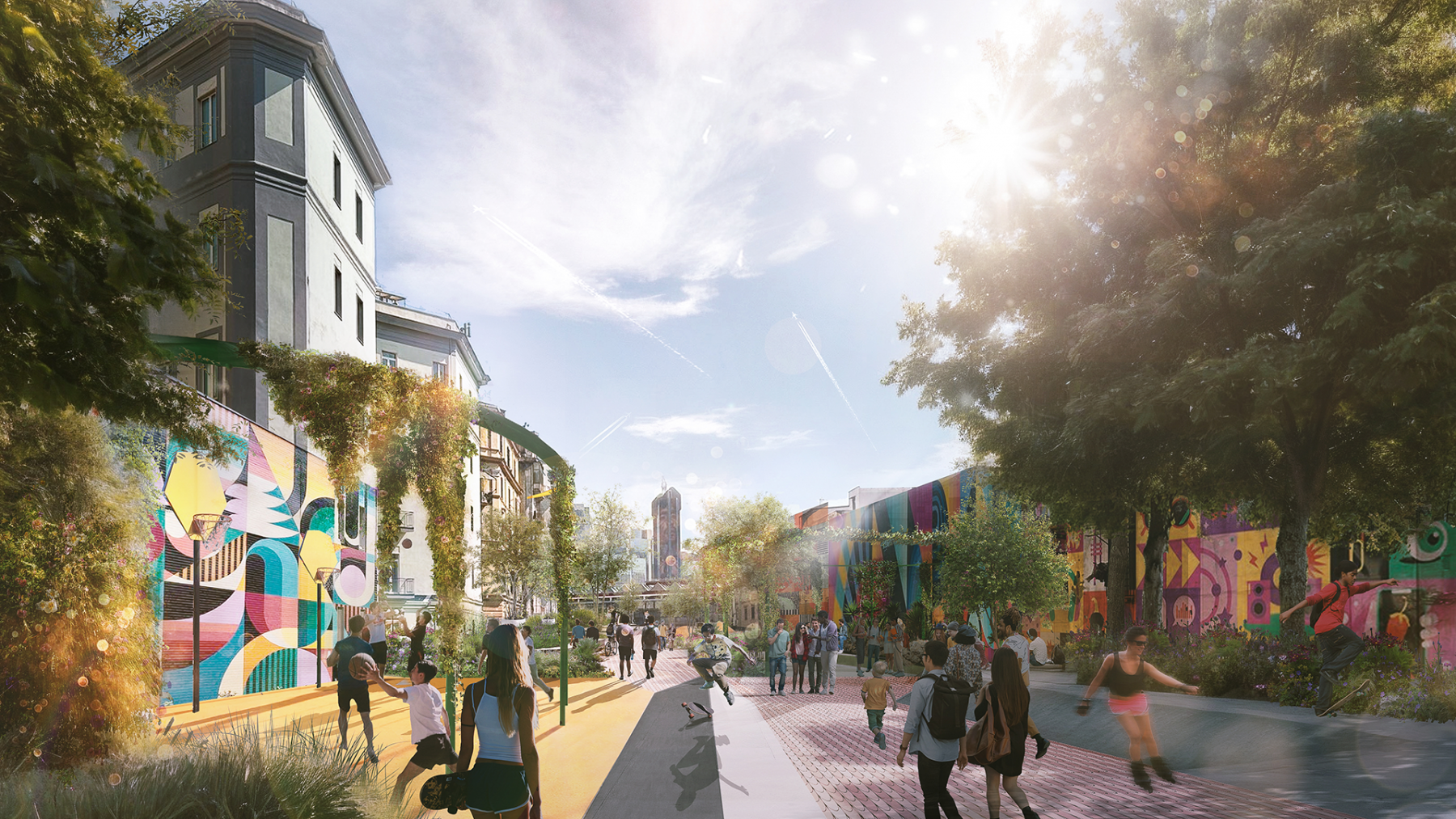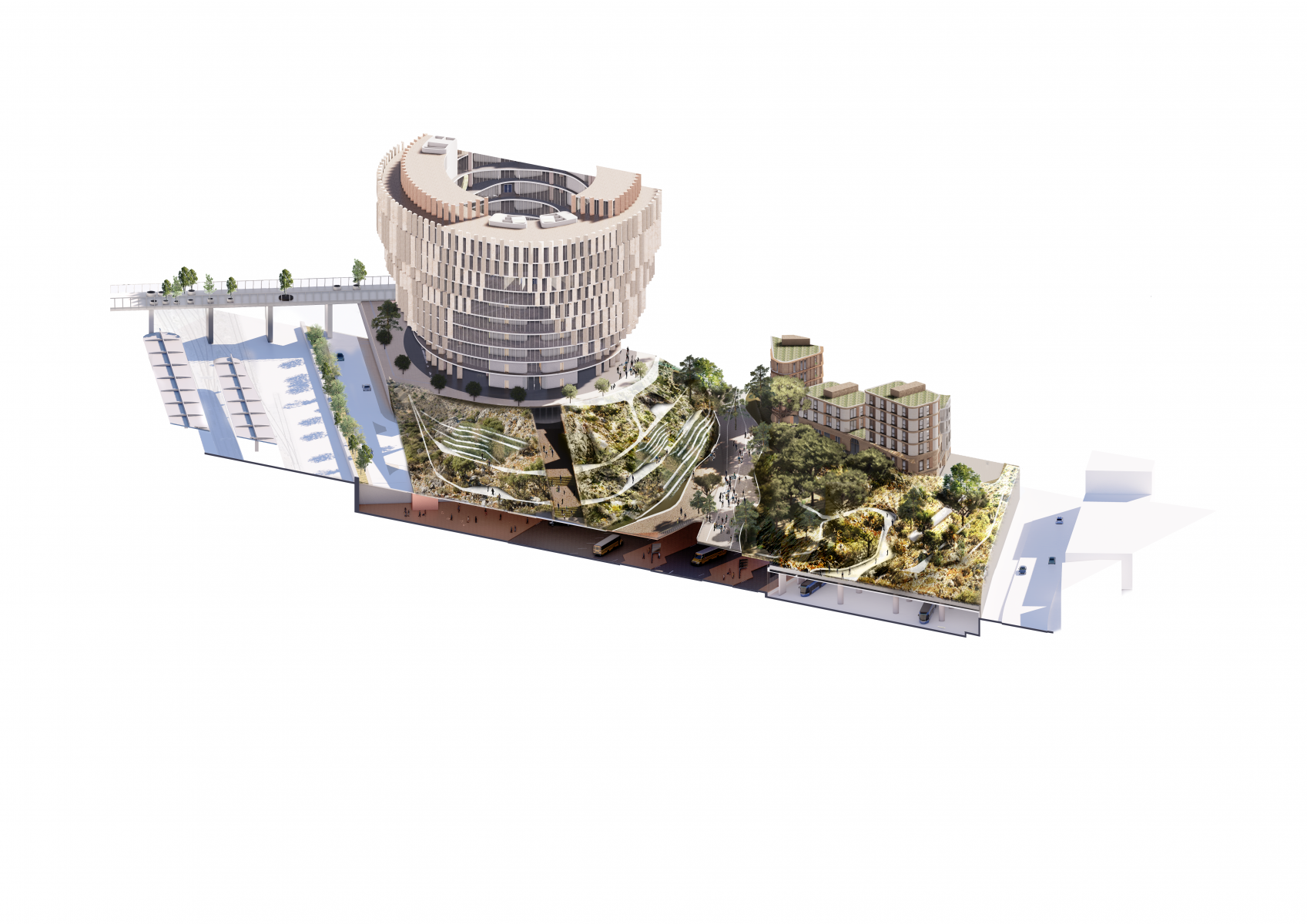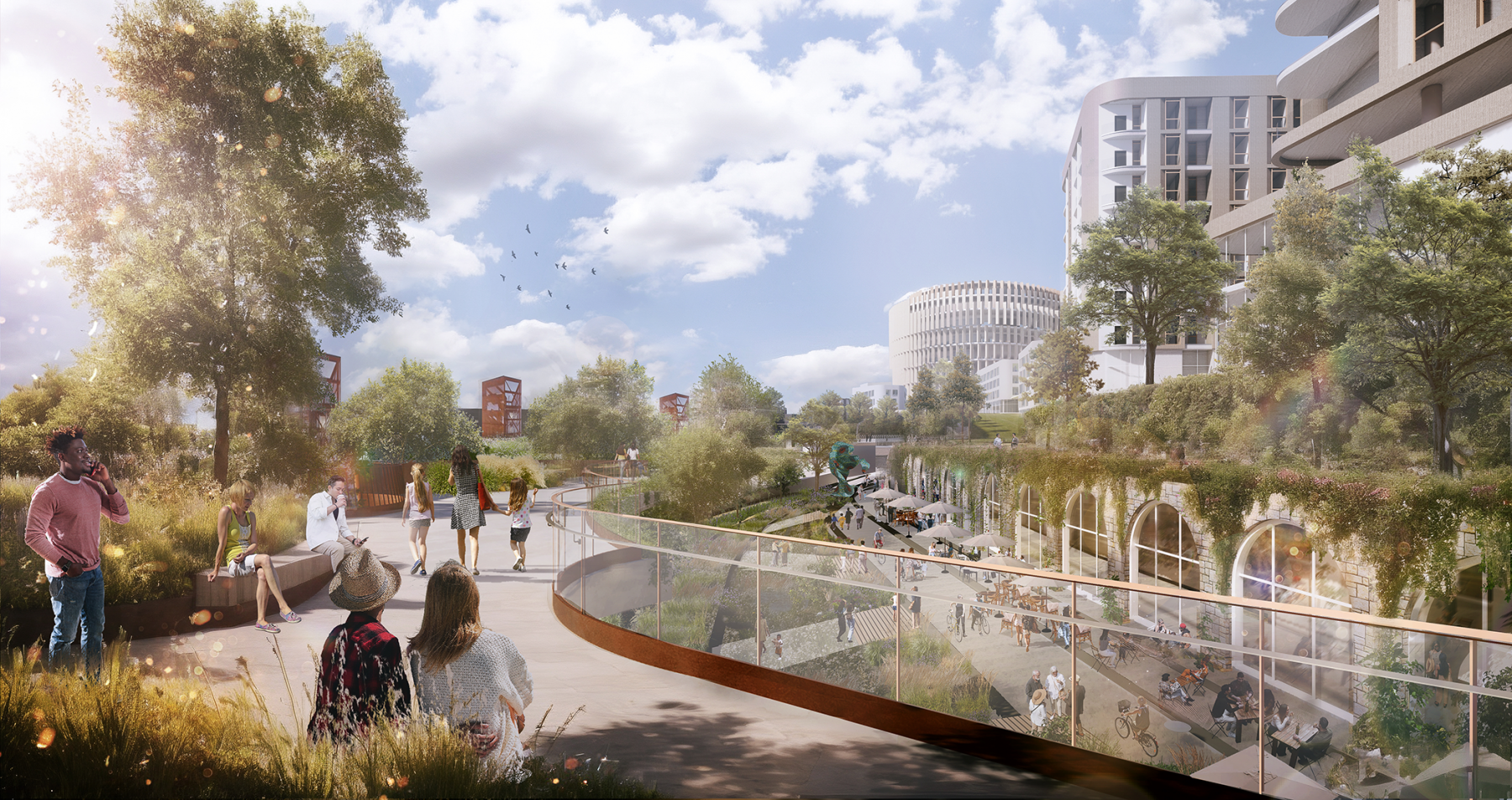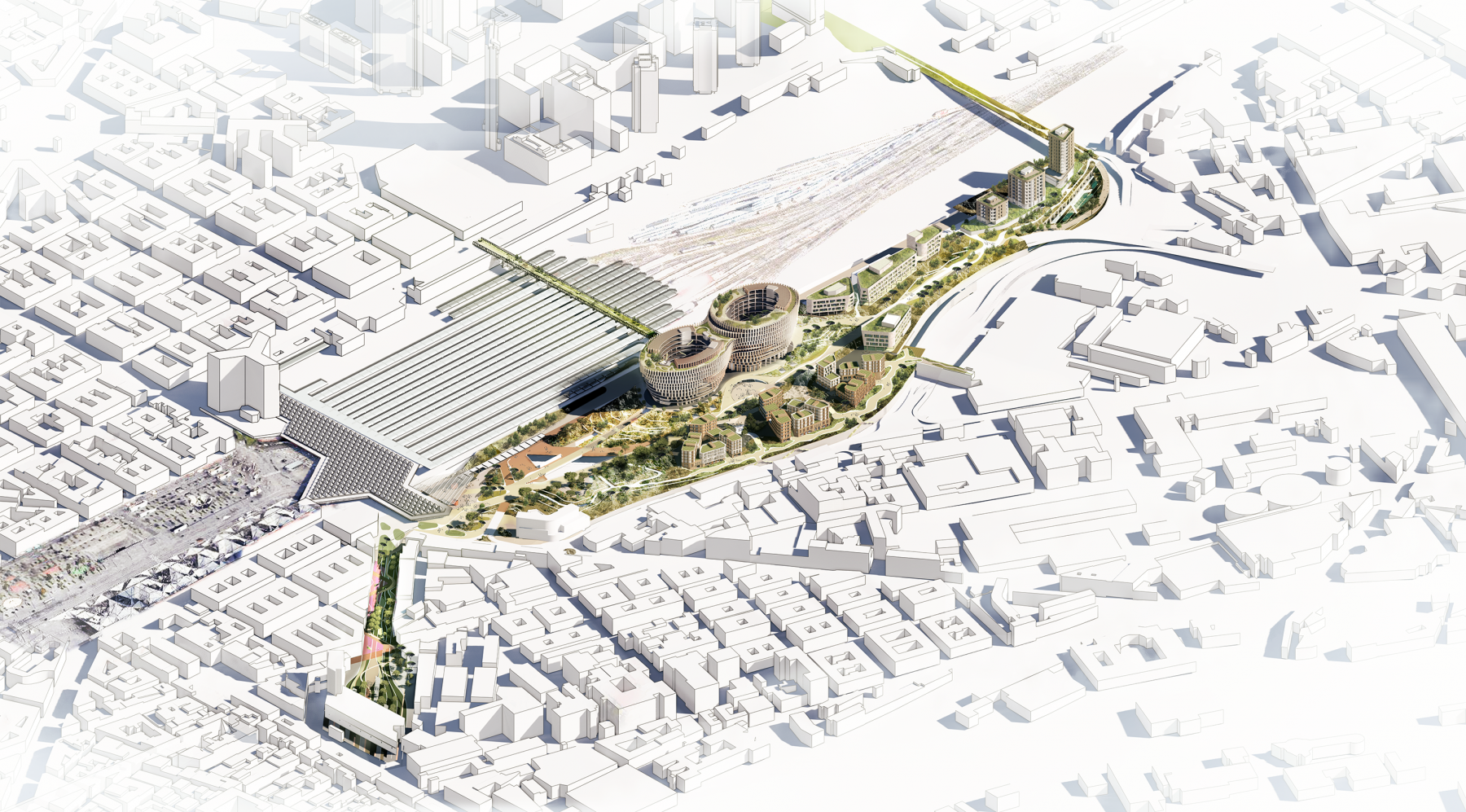Studio Egret West's proposal for the Napoli Porta Est competition for a €700M urban regeneration plan, integrating an intermodal mobility hub and constructing a new civic headquarters for the Region.
Show info
Studio Egret West's proposal for the Napoli Porta Est competition for a €700M urban regeneration plan, integrating an intermodal mobility hub and constructing a new civic headquarters for the Region.
Location:
Naples, Italy
Client:
Campania Region + FS Sistemi UrbaniRole:
Architect, Urban Designer, Landscape Architect
Status:
Competition
Collaborators:
Awards
Year
Category
Award
Status
2025
Competition Entry
WAF Awards
Highly Commended
Key Project Contacts


